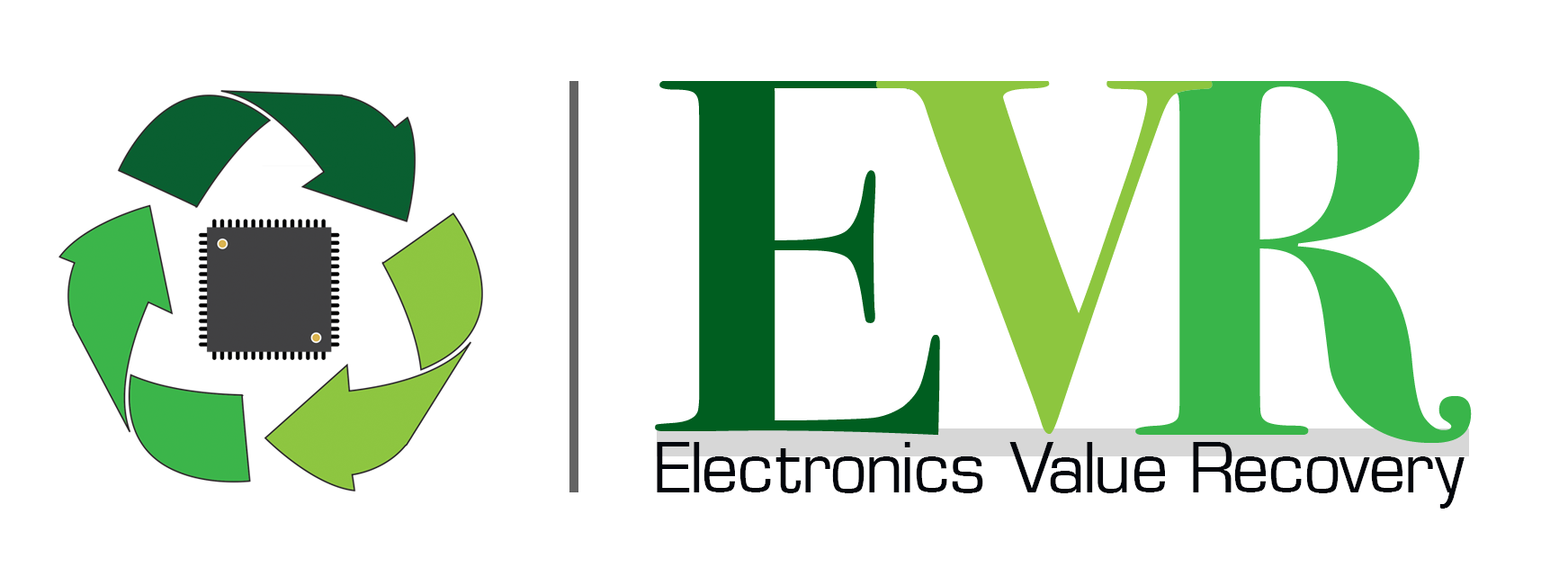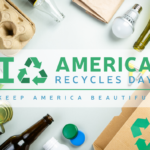
October 14th was International E-Waste Day. Experts, producer responsibility organizations and the WEEE Forum call on households, businesses and governments to send dead, obsolete and surplus plug-in or battery-operated products to processing facilities. Electronics recyclers can either repair devices for reuse or recover valuable materials. This reduces the need for new resources. It is critical to reduce the growing amount of E-Waste now.
Technology dominates our world and has revolutionized the way we work, communicate and live. Each year, these devices become more powerful, more versatile and smaller. But like everything else, they eventually reach the end of their useful life and we must dispose of them.
Why Reduce the Growing Amount of E-Waste?
We have desktops and/or laptops at work and we have one or the other, or both, at home. We no longer use them just for writing papers and reports or running spreadsheets. They are entertainment devices for streaming “TV” shows and movies and for playing games. From smart watches that track our steps to refrigerators that make shopping lists, all contain electronics. So it’s no surprise that e-waste is the fastest growing component of the global waste stream.
E-Waste Contains Hazardous Waste
The extraction of the raw materials and the energy used in manufacturing new products have the greatest negative environmental impact. For example, 85% of the greenhouse gases produced by smart phones come from creating motherboards and various chips.
But unlike other recyclables which decompose in the landfill (paper) or are inert (glass), electronics pose an environmental hazard when they are improperly discarded. The Environmental Protection Agency (EPA) estimates that electronics are responsible for up to 70% of the toxic waste in landfills. Monitors, semi-conductors and printed circuit boards contain heavy metals such as lead, barium, and mercury. When they leach into the soil and water, they contaminate ecosystems, harm wildlife and pose significant health risks to humans.
E-Waste Contains Precious Metal & Rare Earth Elements
However, our electronics also contain precious metals. Earlier generations of electronics contained significant amounts of gold and silver. As they have become smaller and cheaper, they contain far less. A Department of Defense study for recycling government equipment found that computers from 1976 contained four times as much gold as ones manufactured just 5 years later. In modern electronics, silver is the most common of all the precious metals.
Electronics also contain a range of rare earth elements (REE). These elements are actually plentiful in the Earth’s crust but extremely difficult to mine and extract economically. REE’s are critical components of computer chips, graphics cards and transistors used in virtually all electronic devices. They are also vital to produce many of the important green technologies – solar arrays, wind turbines and electric car batteries.
Why Was Gold So Important When Computers Were First Invented?
Computers and electronic components were originally designed for use in aerospace, defense, scientific testing, radar and communications. Gold has high electrical conductivity and is tarnish resistant. It is relatively soft and pliable which makes it easy to work with.
Things like solid-state electronic devices use very low voltages and currents. They can be easily interrupted by corrosion and tarnish at contact points. Gold is a great solution to this problem. It is a highly efficient electrical conductor capable of carrying tiny currents while remaining free of corrosion. For this reason, many components are often gold or gold-plated, which makes them more durable and reliable. The majority of components were manufactured specifically to support the manned Space missions and national defense projects. Therefore, it was “mission critical” to maintain higher quality and reliability requirements.
So What Happened? A Bit of (Forgotten) History
To stabilize struggling economies after World War II, the U.S. pegged the dollar to gold at $35 an ounce. By 1971, the world entered a period of slow growth and high inflation. Foreign governments traded their cheap dollars for gold. To combat these two problems, the US removed the dollar from its official gold backing on August 15th. Overnight, the price of gold shot up to $850 per ounce. This forced the industries that used a lot of gold to look for substitutes.
Silver was the next best thing, reducing the amount of gold required in devices. Now however, there is a silver shortage. “The largest segment of silver demand is industrial, [representing] almost 50% of total demand. Silver production has been dropping,” according to Nicky Shiels, head of metals strategy at precious metals company MKS PAMP.
Surprisingly, most silver is a byproduct of lead-zinc, copper and gold mines, not dedicated silver mines. “When demand for silver rises, it’s not like the silver mines can increase production. Silver mines only supply about 25% of the silver. The market often relies on the lead-zinc mines to satisfy the higher demand” says Randy Smallwood, president of Wheaton Precious Metals.
“Rock to Mineral Ratio”
A study by the U.S. Geological Survey (USGS) and Apple analyzed the 25 mineral commodities used by virtually every manufacturing industry in the global economy to calculate the “Rock-To-Mineral-Ratio” (RMR). It revealed that the worldwide total of ore and waste rock moved in 2018 for the 25 mineral commodities was about 37.6 billion metric tons. This enormous number is roughly the equal to almost 7,000 Great Pyramids of Giza being moved each year.
Understanding the RMR can quantify the benefits of recycling as it pertains to offsetting the need for new materials. For example, recycling 35.274 ounces of gold offsets an average of 3,000 tons of ore that was not mined and waste that did not need to be removed. By putting the quantity of the mineral in terms of the rock that was mined to extract it, it helps educate the general public and policymakers about the intensity and the scale of activity involved in supplying the materials and products required for everyday life and the entire economy. The utility of the RMR can also be used to calculate other factors such as areas of surface disturbances, total mass of solid waste generated, energy requirements, and associated greenhouse gas emissions.
“As Apple continues to pioneer new innovations in recycling, the rock-to-metal ratio will help advance scientific understanding of the value of using more recycled materials and accelerate progress toward a circular economy,” said Sarah Chandler, Apple’s senior director of Environment and Supply Chain Innovation.
Reduce the Growing Amount of E-Waste by Mining the Urban Waste Stream
This is where Electronics Value Recovery can help. In 2005, Maryland became the third state behind California and Maine to enact legislation to stem the flow of electronics to landfills. Today, most of the states on the Atlantic seaboard, and the District of Columbia, have some type of e-waste law. The “Seventh Resource,” a term coined by International Bureau of Recycling (BIR), represents the resources that until now we have considered waste: recyclables. Reimagining waste as a resource is the foundation of the circular economy. Turning waste into wealth could unlock an estimated 4.5 trillion in additional economic growth by 2030.
Working with your in-house IT team, or independently, EVR’s knowledgeable technicians can help you evaluate your equipment to determine what to retain and what is obsolete. We can assist in the dismantling or simply pickup what you’ve already collected, from your space or at the loading area. EVR trains the pickup team in handling and packaging in order to preserve the value and cosmetics of the material.
Upon receipt at our secure gated and camera-monitored facility, each device that potentially contains data is individually checked in. Technicians wipe devices containing data or shred them for scrap recycling. Devices that pass our strict quality controls are refurbished for resale. Those that don’t make the cut are sent for parts harvesting or recycling. Hazardous materials are managed in compliance with environmental regulations. We provide comprehensive reporting, including certificates of recycling and data destruction, to verify responsible recycling and regulatory compliance.
Contact Electronics Value Recovery to learn how we can hope you reduce the growing amount of E-Waste now.


